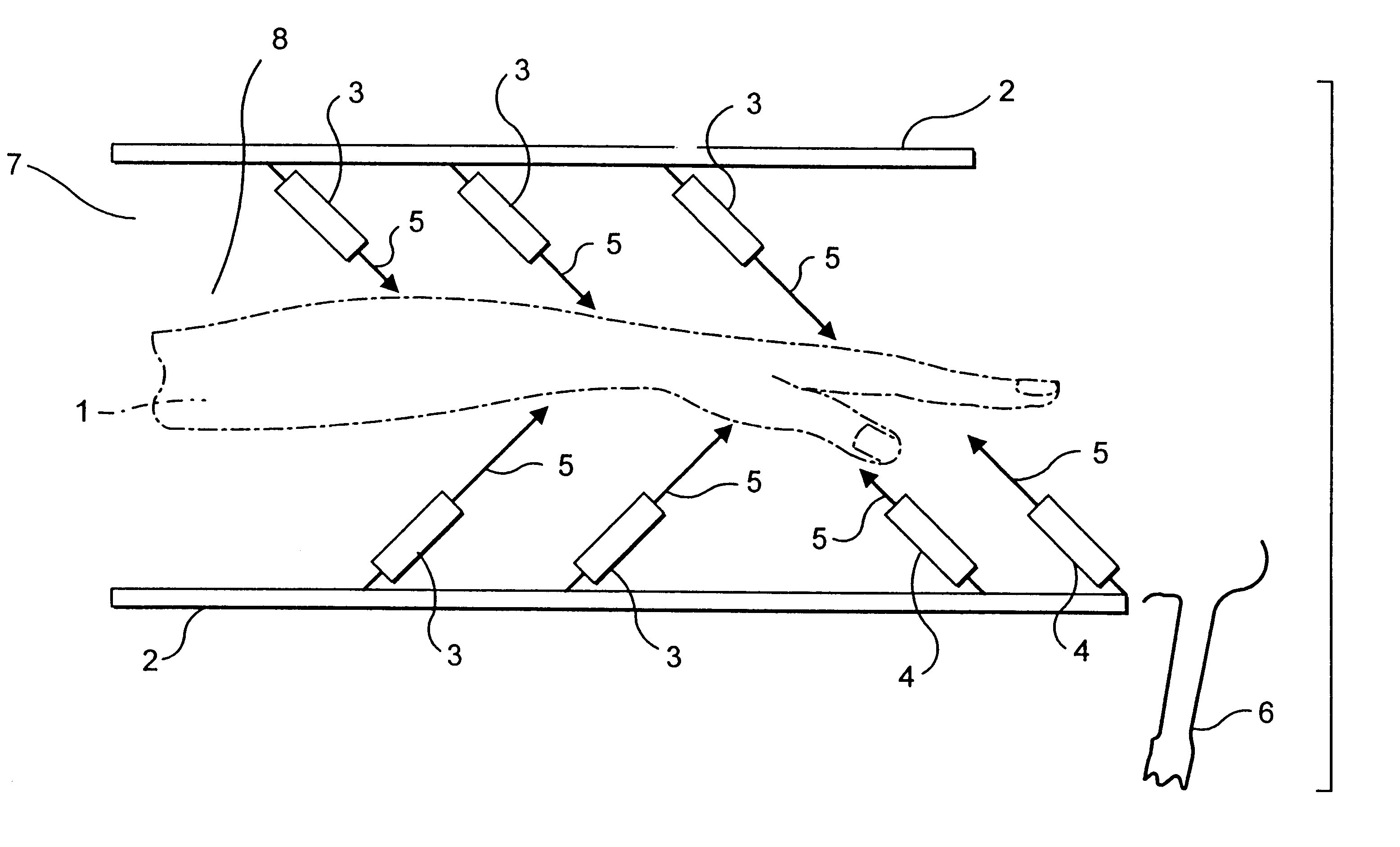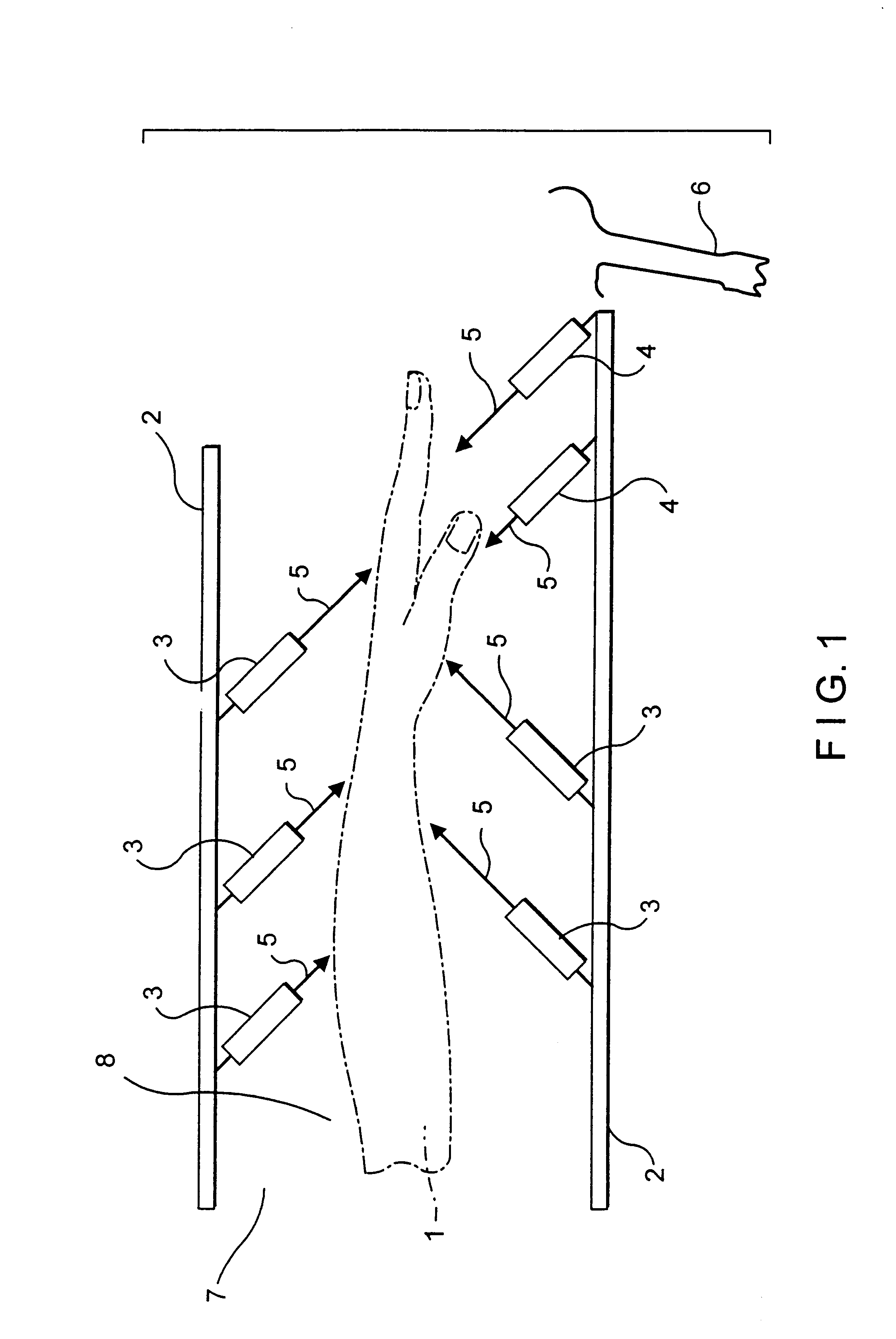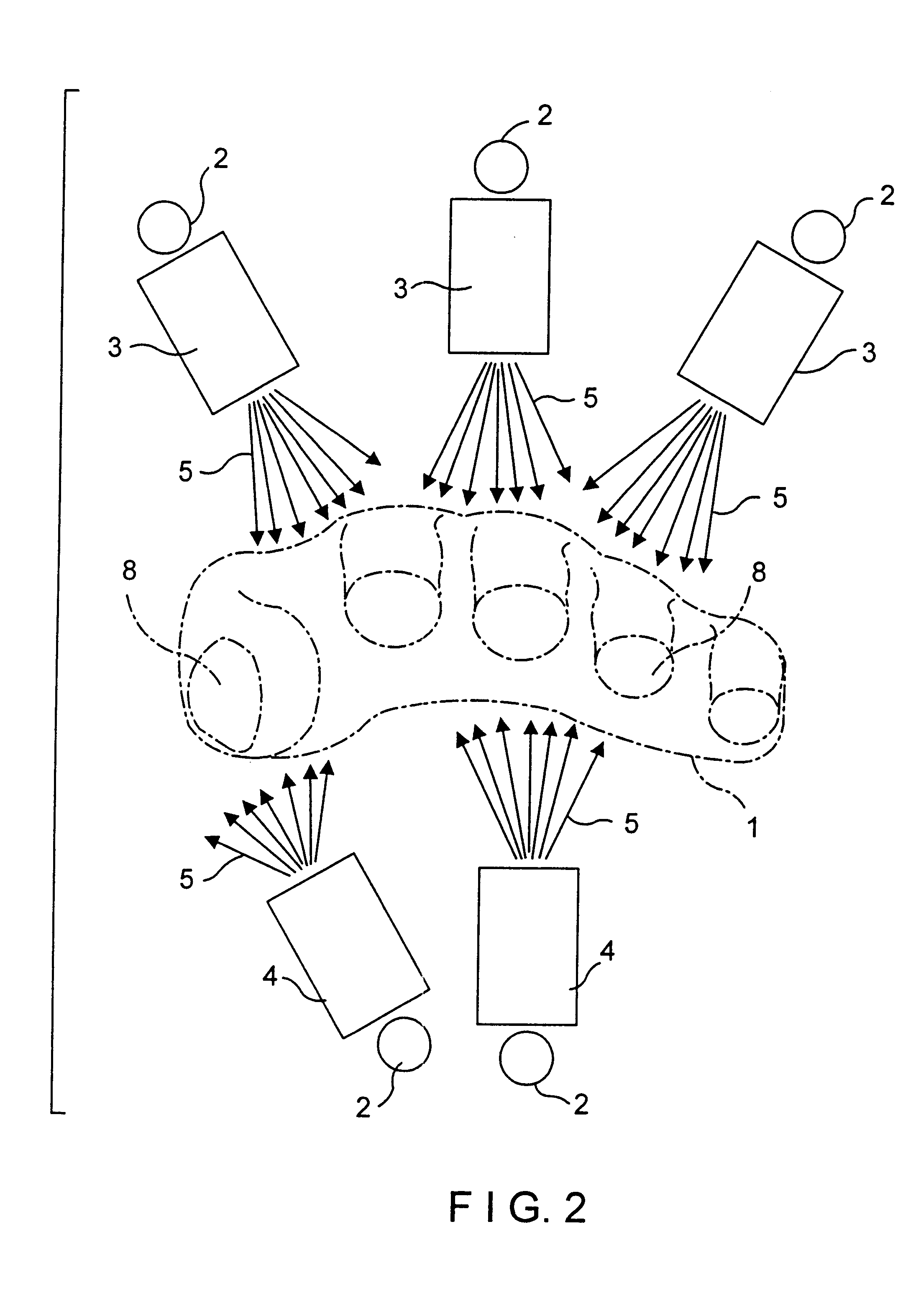Method of removing contaminants from an epidermal surface using an oscillating fluidic spray
a technology of fluid spraying and epidermal surface, applied in the direction of cleaning using liquids, instruments, photosensible materials, etc., can solve the problems of hepatitis b in the pacific, high mortality rate of fast food establishments, and inability to pass on pathogens, etc., and achieves moderate effect of skin scrubbing, for example with cloths or brushes, and antibacterial soaps
- Summary
- Abstract
- Description
- Claims
- Application Information
AI Technical Summary
Problems solved by technology
Method used
Image
Examples
Embodiment Construction
The following detailed explanations of FIGS. 1-9 and of the preferred embodiments, when read by those skilled in the art, will reveal the method and apparatus of our invention. Although the following description is primarily concerned with "hand and forearm" washing of human limbs, it will be appreciated that the invention is not limited to the preferred embodiment but is applicable to any epidermal sites, including, but not limited to, proposed surgical sites. In addition, we wish to not be limited to human epidermal areas, but recognize that cleansing of the skin or surface of a variety of living or non-living beings including fish, poultry, mammals, vegetables, food stuffs, and the like is possible with our invention. Furthermore, we do not wish to be limited to epidermal layers, but also recognize that any pliant, porous or non-porous, surfaces that have resonant vibratory characteristics will benefit from cleansing using our invention. Such surfaces are exemplified by leather, ...
PUM
| Property | Measurement | Unit |
|---|---|---|
| temperature | aaaaa | aaaaa |
| temperature | aaaaa | aaaaa |
| frequency | aaaaa | aaaaa |
Abstract
Description
Claims
Application Information
 Login to View More
Login to View More - R&D
- Intellectual Property
- Life Sciences
- Materials
- Tech Scout
- Unparalleled Data Quality
- Higher Quality Content
- 60% Fewer Hallucinations
Browse by: Latest US Patents, China's latest patents, Technical Efficacy Thesaurus, Application Domain, Technology Topic, Popular Technical Reports.
© 2025 PatSnap. All rights reserved.Legal|Privacy policy|Modern Slavery Act Transparency Statement|Sitemap|About US| Contact US: help@patsnap.com



